Every Wednesday during the month of November, we will be featuring beginner projects from established artisans in the A&S community. Every artisan, no matter how advanced, was a beginner at some point in their A&S journey. We hope this blog series will encourage you to be gentle with your first tries!
Today’s featured artisans are: Mistress Vivian de Dunbar and Mistress Ysabel da Costa
Art form: spinning
Vivian’s Spinning Start:
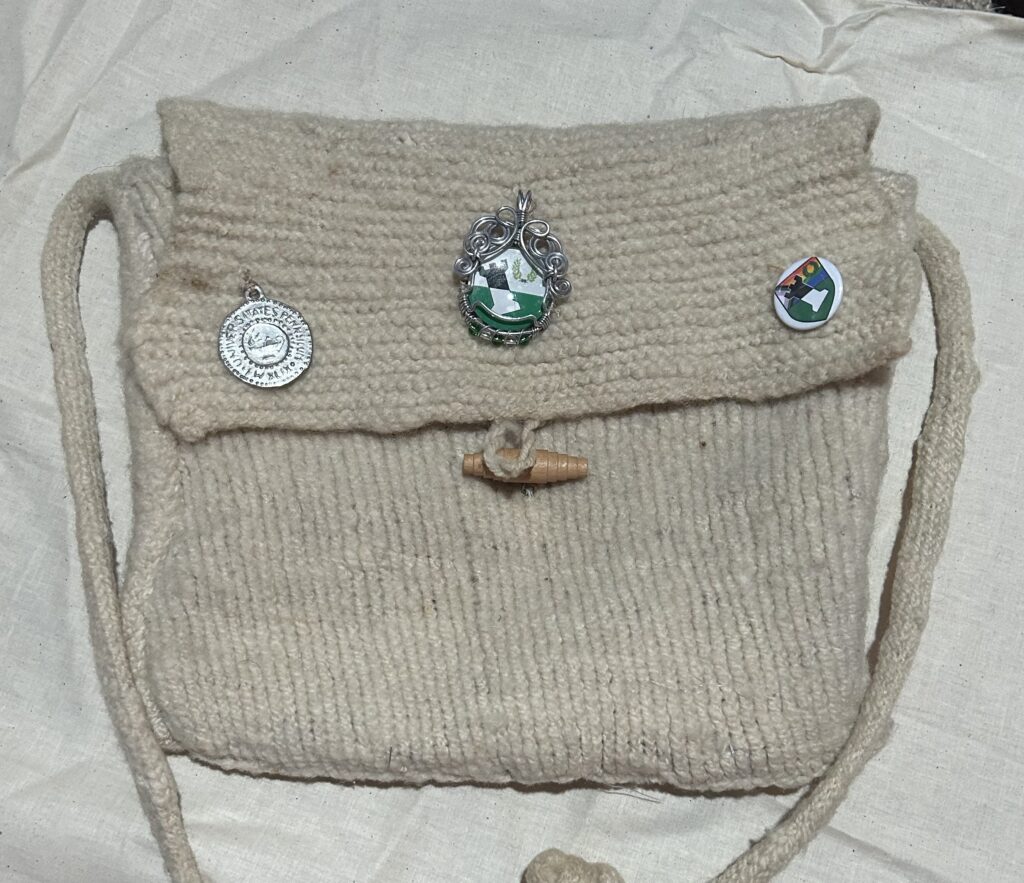
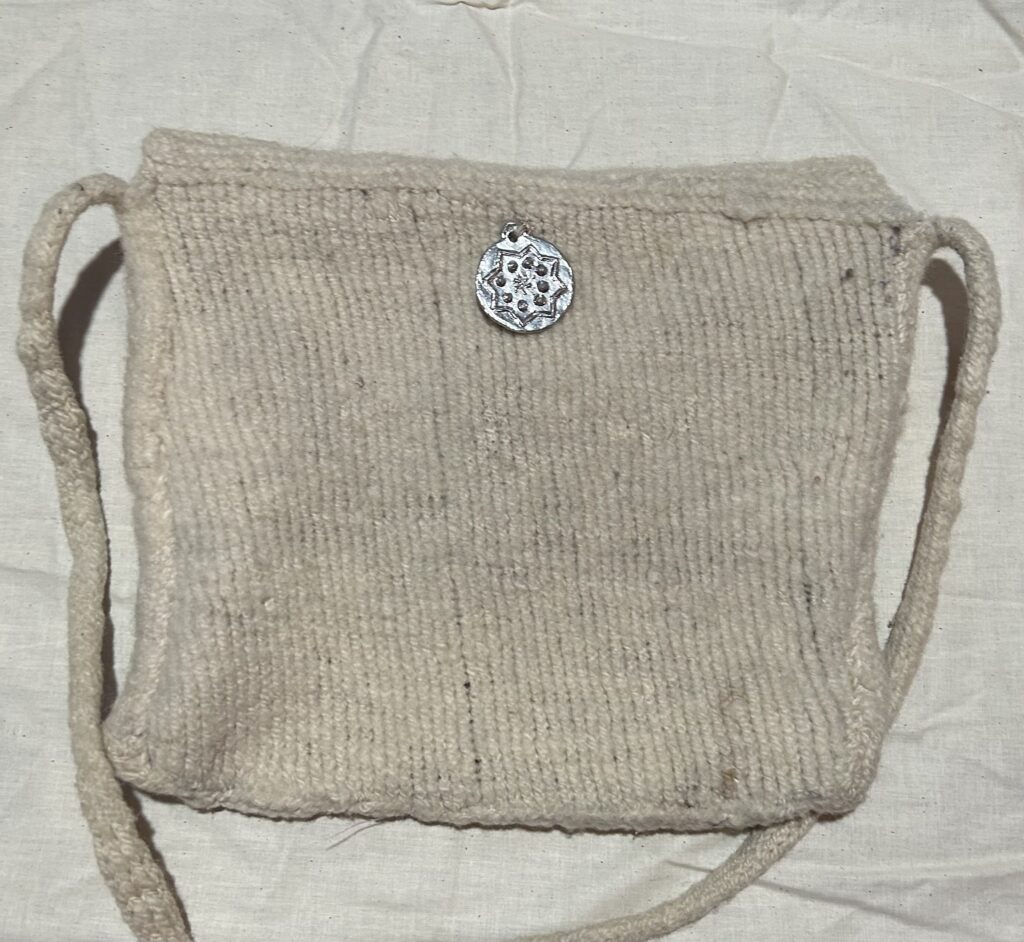
What inspired you to try this art form?
I was a very avid crochet-er since I was a young girl. I was disappointed to find out it was not period when I joined the SCA so I went about looking for a replacement fiber art. I took a class at Pennsic University and fell in love with spinning.
Describe your experience trying this new skill for the first time.
I was so amazed that I was able to do it at all. Like so many fiber arts, it is very easy to learn how to do it, but it takes a lot of practice to get good at it.
What was the hardest part of trying something new? What was the most fun?
The hardest thing for me was having an idea in my head of what type of yarn I was trying to create, and it was very frustrating to not be able to create it how I wanted. The fun part was trying out all the wonderfully different fibers. I went right from spinning wool to spinning silk. Even now there is always a new type of fiber for me to try.
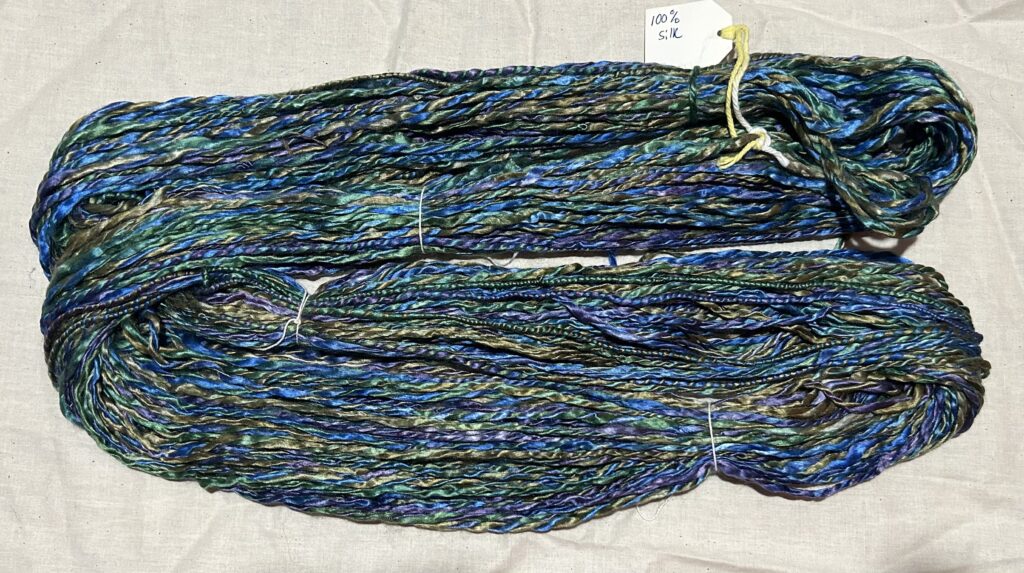
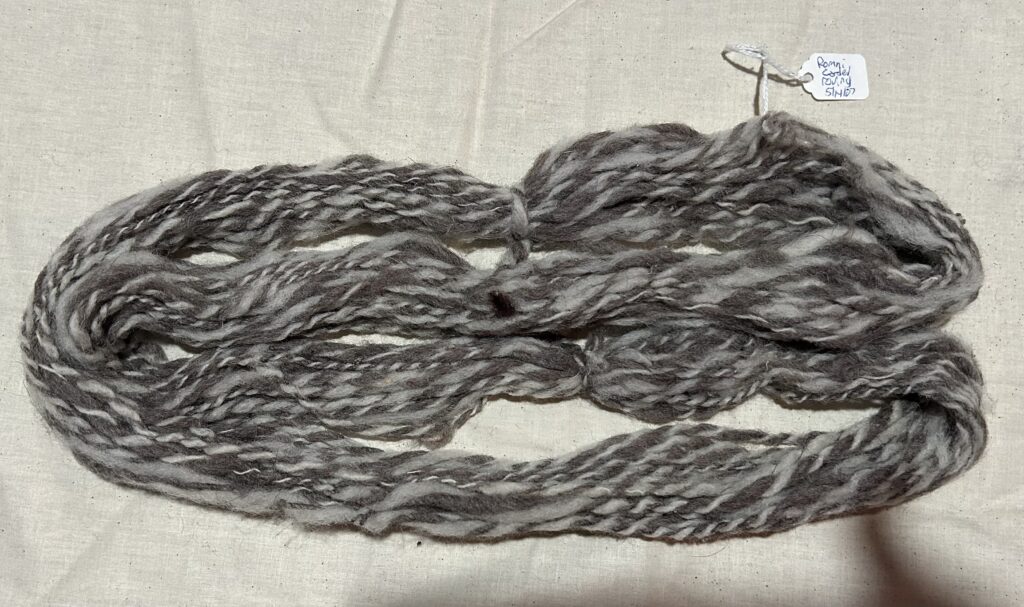
Ysabel’s Spinning Start:
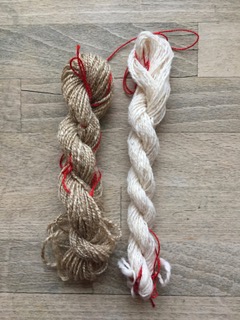
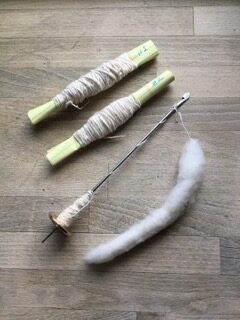
What inspired you to try this art form?
I wanted to make an embroidered object in the style of a particular museum piece from Bengal. The model is made with natural tussar silk floss on cotton fabric. Its unique beauty comes from the look and color of the undyed wild silk thread, which appears to be single-ply. I couldn’t find anything for sale that was correct for the project (I tried!), but unspun tussar silk fiber of good quality was available. So, although I had never done any spinning before, I eventually decided to try to spin my own embroidery floss.
Describe your experience trying this new skill for the first time.
I bought a small amount of tussar silk fiber and a tahkli, which is an Indian-style supported hand spindle. I was reluctant to invest much money in supplies, as I wasn’t at all sure I would succeed. I was clumsy with the spindle, and the silk proved very difficult to draft with one hand, as required for the tahkli technique. I couldn’t understand how to manage it, and I almost gave up.
However, my tahkli came packaged with a sample of cotton punis (little rolags). Cotton is the fiber most commonly spun on the tahkli, so as a last resort, I tried spinning some cotton. It proved easier to draft than silk, and I was finally able to fill a spindle with thick, lumpy string. By this point, I was getting intrigued with spinning. I continued to practice with cotton for a few weeks, until I could produce a thread of fairly even thickness. When I returned to the silk, I was able to make some thread with it! My first silk thread was slubby and uneven, but it improved quickly with practice.
What was the hardest part of trying something new? What was the most fun?
The hardest part for me was just getting to square one. It was frustrating to have my materials keep clumping up or falling apart; it seemed impossible to manage drafting and spinning at the same time without one (or two!) extra hands. Once I succeeded in making some spun thread, however bad, it gave me a basis for improvement.
The most fun was completing my first skein of finished two-ply thread. It was only 15 yards long, but it looked like real thread, and I was so proud of it! Now I spin on a book charka (portable Indian spinning wheel) just for the pleasure of it. I find spinning meditative and relaxing. But it was certainly frustrating when I was first learning.
Artisan highlight from 11/22/23: Maistir Seamus na Coille Aosda
Art form: Pottery
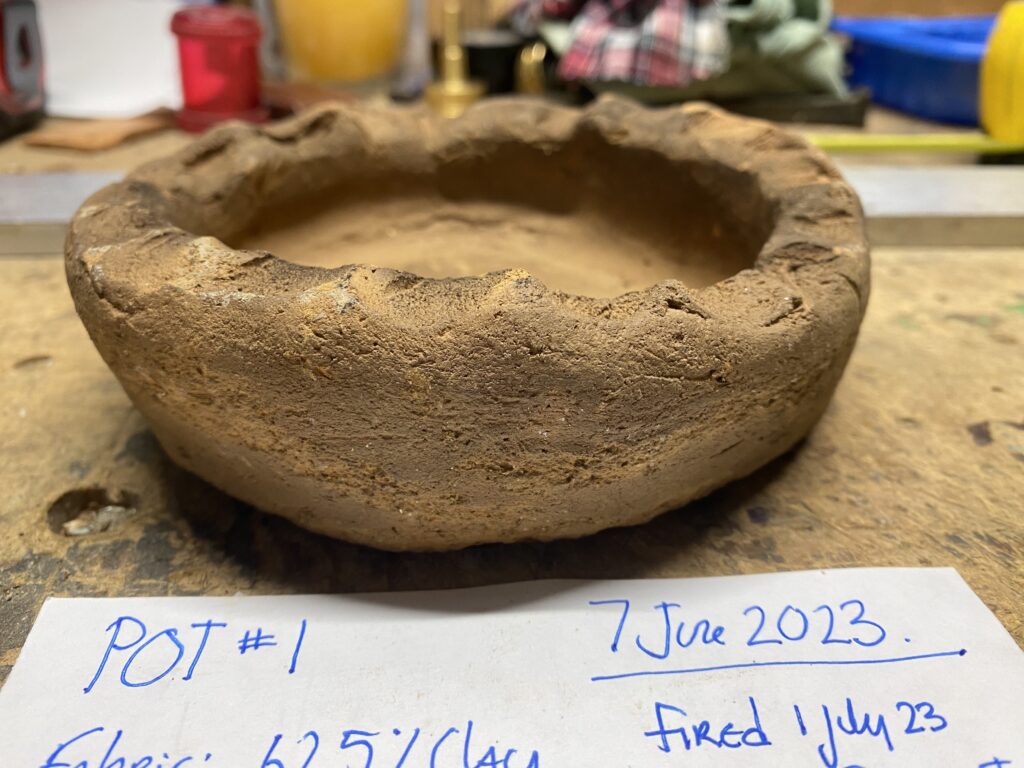
What inspired you to try this art form?
This project was the final project that completed my work on a graduate certificate in Experimental Archeology and Material Culture from University College Dublin. It required making something, preferably in a material or craft with which I was unfamiliar. It built on my earlier research and presentation on the souterrain ware pottery of early medieval Ireland.
Describe your experience trying this new skill for the first time.
I chose to do all the steps of pottery production from mining clay, processing the clay, coil building the pots, firing them in an open fire and using the surviving pots for cooking, eating, drinking and storage. Some steps like mining the clay were very simple and comfortable. Processing the clay and coil building the pots required repeated practice and reflection before I began to get a feel for it. I mean literally a feel for it. A feel for the plasticity of the clay, the stickiness, the grittiness of the temper, the thickness of a pot wall as I shaped it.
What was the hardest part of trying something new?
The hardest part was not being as skillful and sure working with the clay as I am working with other materials with which I have vastly more experience. From a distance it is obvious that I would be less skillful but in the moment it could be very frustrating. I managed this with frequent breaks, stepping away when I got particularly frustrated, being kind to myself and as the project progressed seeing the improvement in each new pot I made.
What was the most fun?
Sharing photos of my progress and failures with my SCA friends on Facebook and with my fellow students and faculty at UCD. That and cooking, eating and drinking from my own pots at The Endewearde Hunt.

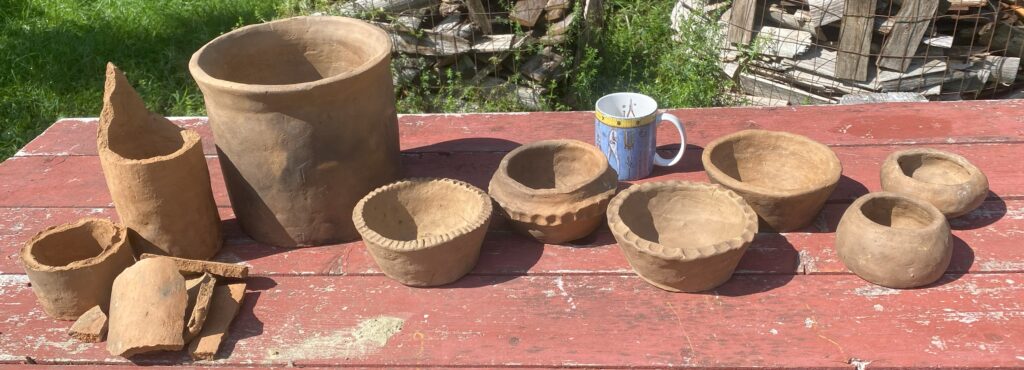
Artisan highlight from 11/15/23: Baron Keziah Planchet
Art form: Illumination
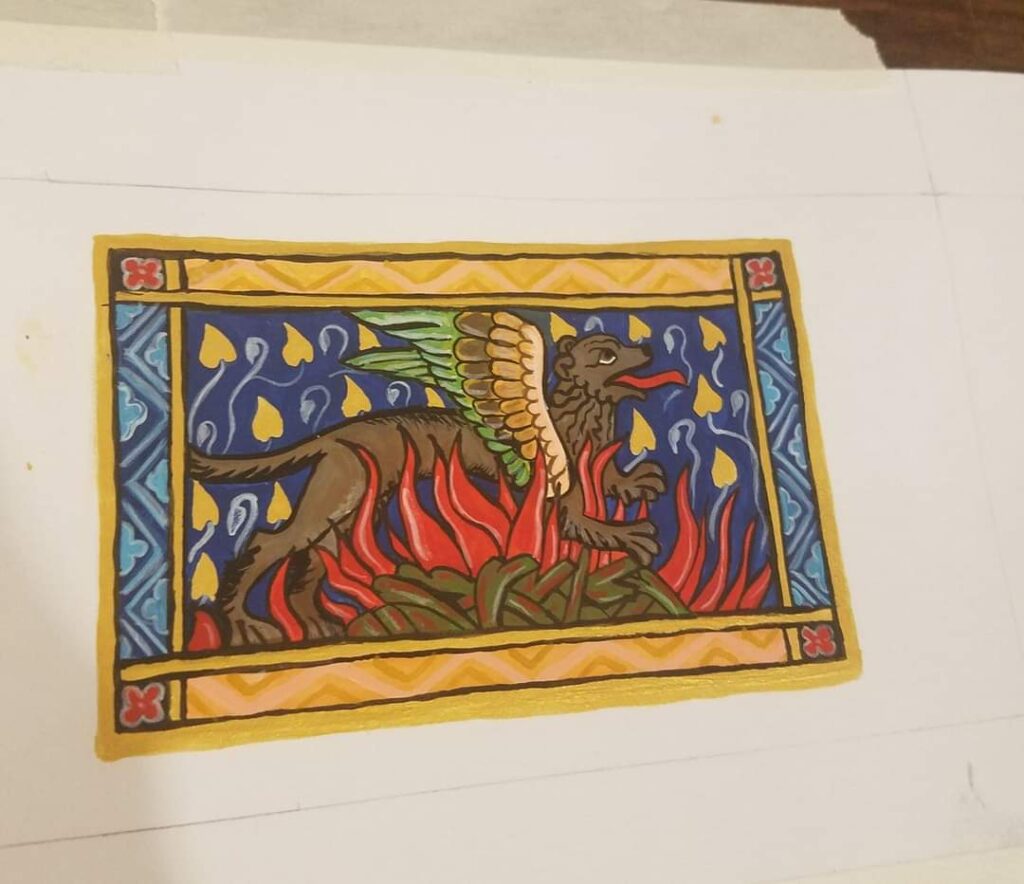
What inspired you to try this art form?
I was inspired to play with illumination after intense encouragement from THL Robert of Stonemarche – I had been intending to involve myself with wordsmithing to assist him and other local scribes (I was doing a lot of opus anglicanum embroidery and short story writing at the time), but he insisted that I just hadn’t played with gouache yet and should give it a go. He was right. Gouache behaved like how a young-me had imagined paint would behave, and I took to it like a fish takes to water. I had looked with admiration at my SCA family’s scrolls my whole life, but for some reason that never had translated to “You could be a scribe” until that spring of 2017 at Robert’s craftnight in Concord. His support and enthusiasm was essential to me.
Describe your experience trying this new skill for the first time.
I remember being a bit overwhelmed with the all-new-to-me-artform, but Robert sat me down and gave me sets of rules to work with – I like having boundaries in my art. I didn’t realize at the time how much came from his Laurel (and eventually, one of my Laurels) Master Harold von Auerbach. They both taught me ways of mixing my gouache, of ways to lay my colors down and to *always* start by tracing from extant illuminations (tracing is period!). The Scribes handbook was also a great resource. Keeping my eye on the very technical portions of the medium, like laying down the paint evenly, keeping the paper from buckling, matching the tints of different paints on extant illuminations, and also knowing the size of the original piece, kept me from overthinking the Big Picture of “People might see this and not like it”. I knew I was making my best attempt and that was better than no attempt, hands down.
What was the hardest part of trying something new? What was the most fun?
The hardest part of trying something new is always the “am I gonna be any good at it”? Imposter syndrome is rampant across the board. I don’t know if I would have been able to email the EK Signet eventually if Master Harold, as our baronial signet, hadn’t started me off with Blank scrolls. If memory serves, I didn’t even know one of my blanks was going out to the Kingdom until later, because he had just decided my work was ready, and sent it out with his calligraphy on it (all credit was given, once you give a blank over, you might not know where it ends up!) In this respect, having a Peer in the same art form, as well as apprentice siblings, helped keep me grounded and growing until I was confident in my own work enough to start teaching others and assisting in other scroll projects.

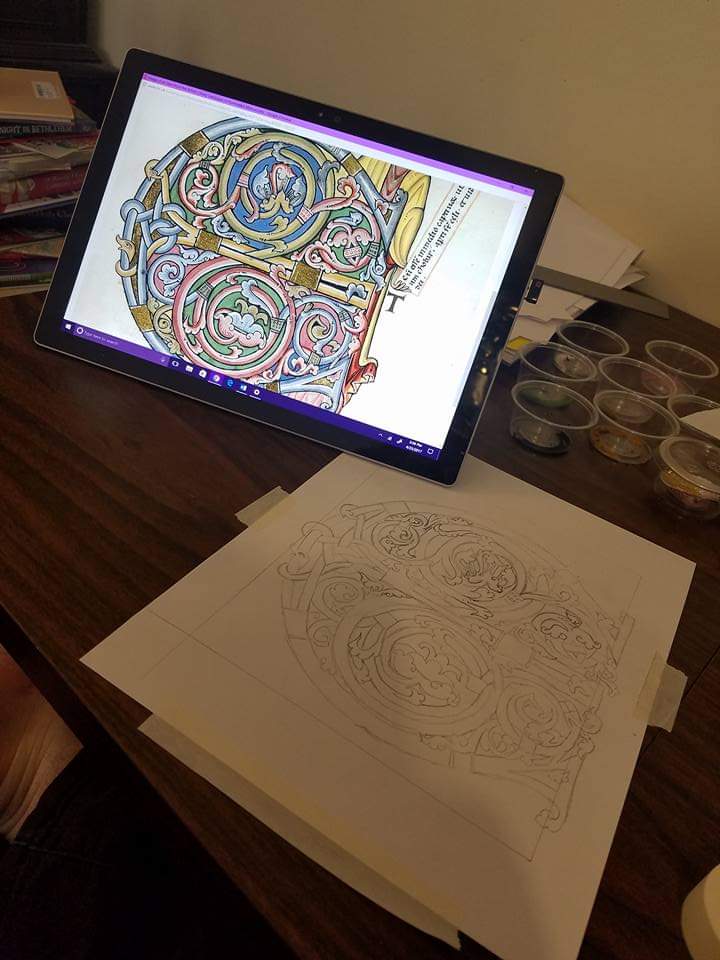
Artisan highlight from 11/8/23: Abu-Darzin Ibrahim ibn Musa bin Sulayman al-Rashid, Laureate
Art form: Nalbinding
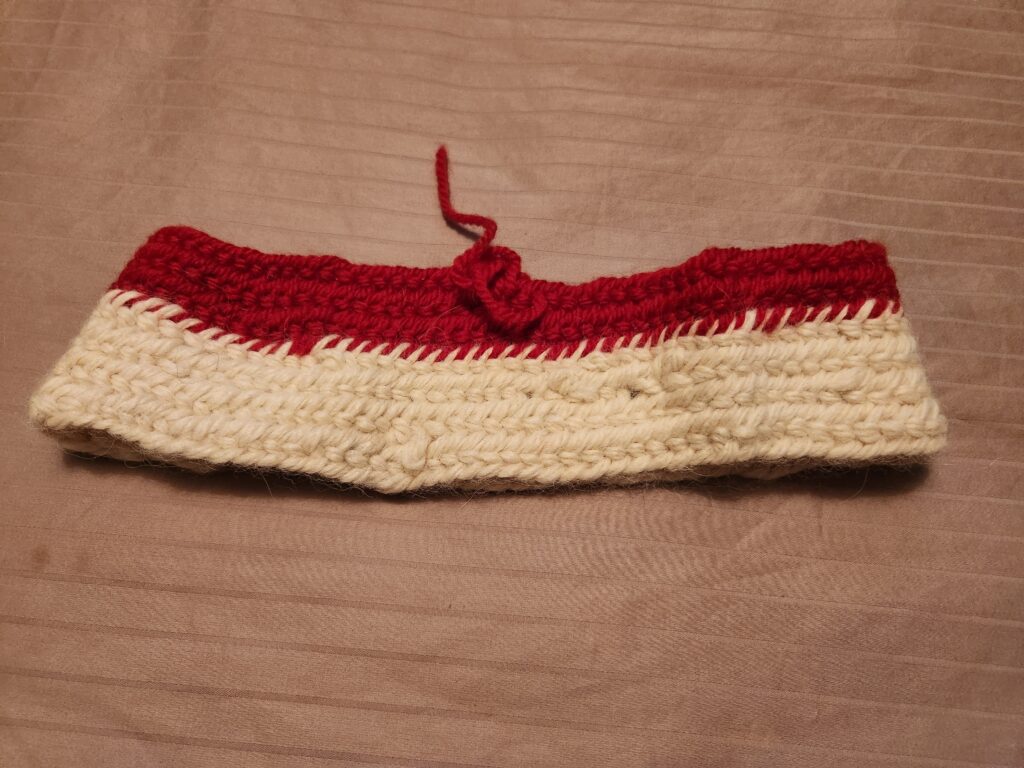
What inspired you to try this art form?
I was first prompted to learn nalbinding in 2010 or so. Ostgardr would do a demo at the annual “Viking Day” Scandinavian festival in Brooklyn and I wanted to have something thematically appropriate to do at the demo. Since we had folks who were demonstrating spinning, weaving, embroidery and other fiber arts I thought nalbinding would be a useful addition. I knew very little about it (and some of what I thought I knew back then was wrong!).
Describe your experience trying this new skill for the first time.
I soon learned that no one in our area knew how to do this craft, which made learning it a bit more difficult. There were also very few instructional books at the time and those that existed could be hard to find. I was able to find a couple of websites that had rudimentary instructions and managed to work things out from there.
What was the hardest part of trying something new? What was the most fun?
The hardest part of learning nalbinding was that I felt very much on my own. I feel like there are a lot more resources now (on social media, as well as more people in the SCA who can do in person teaching), but it may just be that it took me a while to find the resources that were out there. The most fun part was watching a three-dimensional object seemingly spring forth into existence in my hands.
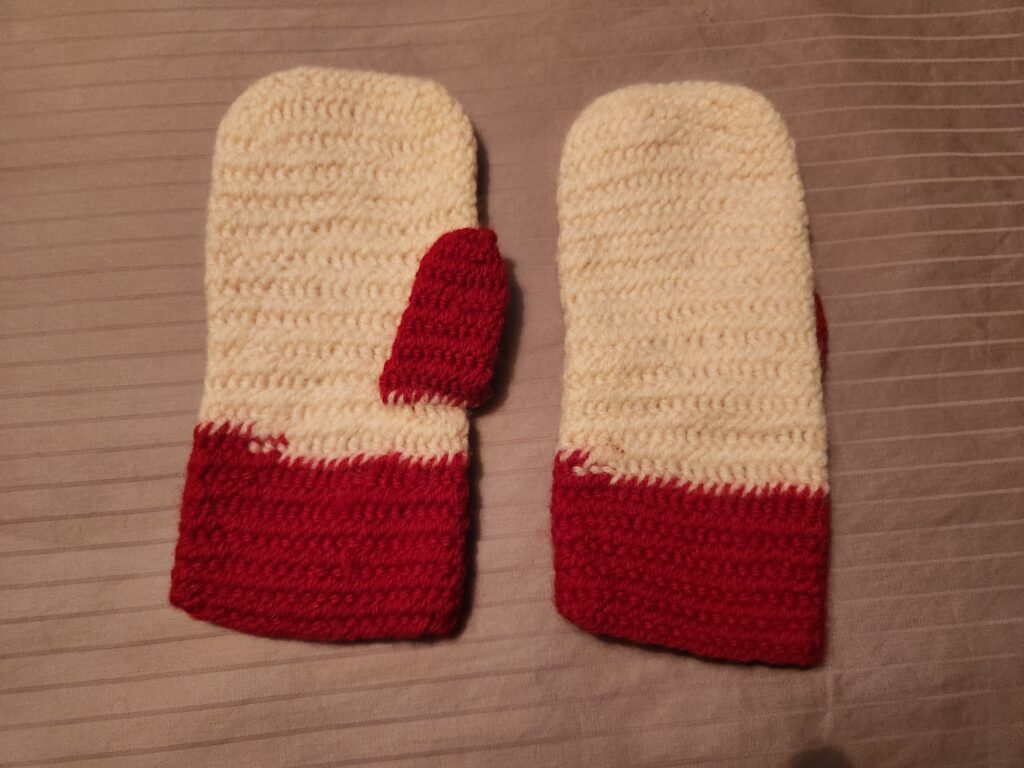
Artisan highlight from 11/1/23: Master Nataliia Anastasiia Evgenova
Art form: Calligraphy
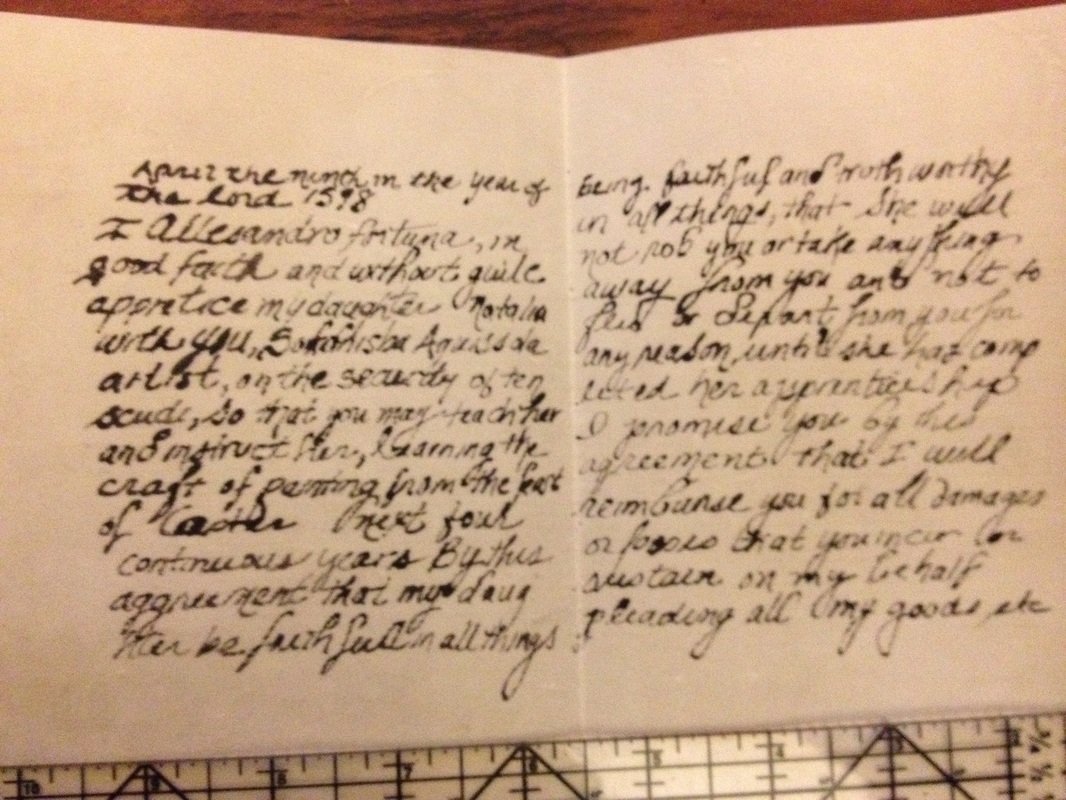
What inspired you to try this art form?
I was entering Artifacts of a Life, which was the first art event that I actually entered and competed in 2015. I was representing a female artist of the 16th century who was a member of an art guild and what she would have. One of them would be an artist contract. I had been looking into the artists of the time period and wanted to try and represent what a contract might look like and contain.
Describe your experience trying this new skill for the first time.
I bought some vellum, cut a quill, not very well, and purchased oak gall ink. I did some research on apprentice agreements as well as other legal agreements, and exemplars of written documents of the time. The research was pretty good, the cutting of the quill and the actual writing of the artist contract was difficult. The writing samples of the time period are a wide range from fancy handwriting to calligraphy. Calligraphy is not a strength for me and I struggled. I also didn’t know anything about the handling of vellum and so I ended up fighting my materials. It was quite the messy project.
What was the hardest part of trying something new? What was the most fun?
The hardest part is what I think is the hardest part for everyone. It is the feeling that you want to try something but it is not going to be perfect, not even close and what people might say about your first attempt. I still felt strongly that this was something important in the overall presentation. The most fun was learning about the contracts and what I might have done differently in the future. I also learned that while I continue to get better at calligraphy, it is okay that it isn’t a strength.
